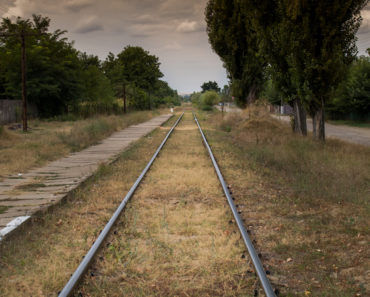People still talk about how crazy these past 4 years have been, and they can’t believe the changes we’ve gone through, not only as a nation but as the whole planet. Unfortunately, there isn’t any good news coming in the foreseeable future, and things seem to be only getting worse. We’ve experienced multiple natural disasters, but also some man-made catastrophes that have caused the worst economic downturn since, I believe, the Great Depression.
So, if you want to know what to expect for the next decades, read ahead and discover the predictions that are most likely to come true. One thing I have to mention is that these are not my personal predictions; they are the conclusions of various studies conducted all over the world.
What the future will bring:
AI-governance
The rise of Artificial Intelligence (AI) is already causing some discomfort for some, to put it mildly. Some are closely monitoring the integration of AI in almost all aspects of our lives, while others don’t bother too much with it since they believe it is still years away from becoming a threat. For those of us who don’t live in a bubble, it’s clear that AI has started to slowly take over certain jobs and is also being integrated, aggressively, I must say, in all aspects of our lives.
Social media is corrupted by AI bots, fake news is being created at an alarming rate, and public services are now conducting various operations with the help of AI. Not to mention that AI is being integrated more and more into the military sector.
Soon enough, we will be profiled based on all our habits, and who knows, perhaps we will live to see a “Minority Report” type of society in which people are detained before committing any crime, just because a computer said they are capable of doing so in the future.
Income and debt divide
There is an ongoing disconnect between the stock market performance and the real economy, and the potential social consequences of this discrepancy are concerning, to say the least. The stock market often reflects the performance and profitability of large corporations and can be influenced by investor sentiment, monetary policy, and global economic conditions.
The real economy includes employment rates, GDP growth, consumer spending, and other indicators of economic health for the average person. While the stock market may recover, this does not necessarily translate into improved conditions for the broader population. High unemployment rates, business closures, and reduced consumer spending can indicate a deteriorating real economy.
On one hand, we have the debt divide, which is the growing disparity between those who can manage their debts and those who are overwhelmed by them. Many people, particularly from lower-income backgrounds, face high levels of personal debt, including credit card debt, student loans, and medical bills. The burden of debt can prevent wealth accumulation and limit financial mobility.
On the other hand, we have a growing income divide, which highlights the gap between high-income earners and low-income earners. This gap has been widening in many countries, exacerbated by factors such as wage stagnation for middle- and lower-income workers, the decline of unions, and changes in the labor market that favor high-skill jobs and automation.
Economic hardship is often correlated with higher crime rates. When people face prolonged unemployment, loss of income, and increased financial stress, some may turn to illegal activities as a means of survival. Additionally, economic inequality can lead to social unrest and higher rates of property crime and violent crime.
Social polarization
Our country has been divided before, but now it seems that it’s getting worse by the day, and there aren’t any signs that social polarization will slow its growing rate. With the rise of AI and its use in social media, it has become easier to turn people against each other based on factors such as political preferences, race, and even sexual and relationship associations, just to name a few.
Furthermore, with the migrant crisis reaching unprecedented levels and the border situation making it easier for migrants to enter our country, society has become divided, and it seems like it’s just “us versus them” at the moment.
If it keeps worsening, some may fear that with the growing recession and our society being more divided than ever, a civil war is bound to happen. Even the entertainment industry is promoting all sorts of movies with topics surrounding the civil war or the downfall of our society. Some say they are trying to prepare us for “something,” or perhaps these are warning signs that are adding additional stress to our daily lives.
Healthcare crisis
The United States is a heavily medicated country, whether we like it or not, this is the truth. The population takes so many prescription drugs on a weekly basis to keep themselves alive and mentally prepared to face daily struggles that we have become a case study for other countries.
This may not seem like such a big problem because we are somewhat a wealthy nation and can still afford these drugs. This is the general mentality, and unfortunately, many folks are unaware that the medicine they take daily comes from countries such as India and China.
What would happen when a diplomatic crisis arises between our country and the countries delivering all the drugs Americans need? Diplomatic relationships with China are already deteriorating at an alarming rate since they started providing support to Russia and their efforts to invade and conquer Ukraine. Instead of taking proactive measures like building the proper infrastructure and production line for various drugs on U.S. soil, Joe is more concerned with putting a 100% tax on Chinese-manufactured Electric Vehicles.
Additionally, many of our fellow citizens seem to have forgotten how fragile our public health system was during the COVID-19 pandemic and how many died because they weren’t able to receive proper medical assistance or receive it in time. Even more alarming is the rise of bird flu cases and the constant mutation of the virus and its transmission to mammals. It’s just a matter of time before human-to-human transmission starts, and when it does, it will have catastrophic consequences considering that the death rate of the bird flu virus (H5N1) is higher than 50%.
Housing insecurity
Those living in big cities already know that we have a homelessness crisis, and it’s been ongoing for more than 10 years now. However, with the migrant crisis and economic instability, renting a home nowadays is a real struggle. Owning a home is out of the question for most folks since they are already living paycheck to paycheck.
Big cities, in particular, struggle with visible homelessness due to higher living costs and larger populations. Cities like Los Angeles, New York, San Francisco, and Seattle have significant homeless populations and face challenges in providing adequate shelter and services.
The rental market in many big cities is characterized by high demand and low supply, leading to increased rental prices. Homeownership has become increasingly out of reach for many due to high property prices, stringent mortgage requirements, and stagnant wages. This is particularly true in urban areas where property prices have skyrocketed.
For example, San Francisco, known for its high housing costs, has seen a dramatic increase in homelessness and housing insecurity. The tech boom has driven up property prices, making it challenging for long-term residents to afford housing.
Additionally, many cities have experienced an influx of migrants and refugees due to political instability, conflicts, economic hardships, and environmental factors in their home countries. This influx can strain local resources, including housing, social services, and job markets. They often seek affordable housing, which is already in short supply in many urban areas. This increased demand can drive up rental prices and exacerbate the housing shortage.
Climate change
For most of us, it’s clear that the planet is getting warmer, and it really doesn’t matter if humans are causing this or not. Global temperature records show a clear upward trend over the past century. The last few decades have seen the warmest years on record, with significant temperature anomalies compared to the 20th-century average.
The polar ice caps and glaciers are melting at an accelerated rate, contributing to rising sea levels. This is one of the most visible signs of a warming planet and can no longer be denied.
There has been an increase in the frequency and intensity of extreme weather events, such as heatwaves, hurricanes, droughts, and heavy rainfall. These events are consistent with predictions of climate models.
Since human agriculture is highly dependent on stable climate conditions, it’s obvious that changes in temperature, precipitation patterns, and the frequency of extreme weather events can disrupt crop yields. For example, prolonged droughts or unexpected frosts can devastate harvests, threatening food security. Considering that most wars throughout history have been caused over food, it’s alarming to imagine the implications of food scarcity for the average person.
Climate change is also making certain areas less habitable. For instance, low-lying coastal regions face the risk of flooding due to sea-level rise, and areas prone to extreme heat may become inhospitable without significant adaptation measures. This leads to domestic refugees and adds more pressure to all the risks described above.
Lastly, climate change affects the availability and distribution of water resources. Changes in rainfall patterns can lead to water scarcity in some regions and flooding in others, impacting drinking water supplies, sanitation, and irrigation.
What does all of this mean for you?
Well, if you’ve been paying attention and not living in a comfort bubble like most Americans, you should know by now that you need to prepare for the times to come. You will need to make sure you can procure the basic resources one needs for survival, such as water, food, and shelter.
There’s still some time left to prepare for the risks outlined in this article, and if you haven’t started doing it, you should ask yourself why and what’s stopping you. Our world is changing without a doubt, and it’s not changing for the better. Like Benjamin Franklin once said, “By failing to prepare, you are preparing to fail.”



![[VIDEO] Pocket Survival Kit (PSK) – Food Procurement Options [VIDEO] Pocket Survival Kit (PSK) – Food Procurement Options](https://survivalcove.com/wp-content/uploads/2023/09/CachePSK6-370x297.jpg)

![Tangible Investments for Preppers! [PODCAST] Tangible Investments for Preppers! [PODCAST]](https://survivalcove.com/wp-content/uploads/2022/02/the-prepper-website-podcast-banner-370x297.jpg)






















